The Ashkenazi Researcher and the Ethiopian Kes Join Forces: "Reviving the Lost Ethiopian Midrash"
Dr. Yoni Schnitzer and Ethiopian Kes Ephraim Lawi are convinced they are making history by translating the lost Ethiopian Shabbat midrash into Hebrew. "We are racing against time to translate the text before it disappears from the world," they emphasize. But how did this mysterious text even come to light?
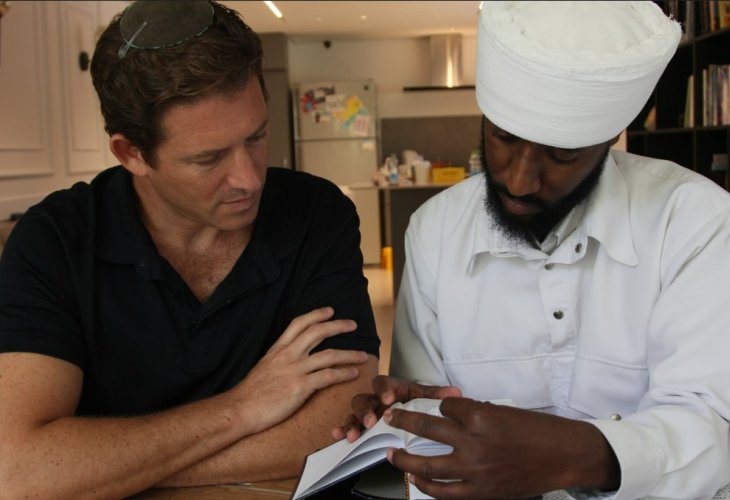 Dr. Yoni Schnitzer and Kes Ephraim Lawi (Photo: Amir Zuckerman)
Dr. Yoni Schnitzer and Kes Ephraim Lawi (Photo: Amir Zuckerman)What brings a doctor of Jewish philosophy with roots in Galicia to collaborate with a kes who emigrated from Ethiopia on a joint project? When you see photos of Dr. Yoni Schnitzer alongside Kes Ephraim Lawi, this question looms even larger. At first glance, there doesn’t seem to be much in common between them.
However, it soon becomes clear that they share one unifying motive: a strong desire to resurrect an ancient text written in Ge'ez and make it accessible to every Jewish household. They definitely believe there is a chance of success.
The Lost Text
This project, which they emphasize is done entirely voluntarily for the people of Israel, was born by sheer chance. It all started when Schnitzer, a PhD in Jewish philosophy who works with medieval manuscripts and Kabbalah, frequently encountered intriguing ancient texts and always enjoyed tracing their origins and revealing the fascinating stories behind them.
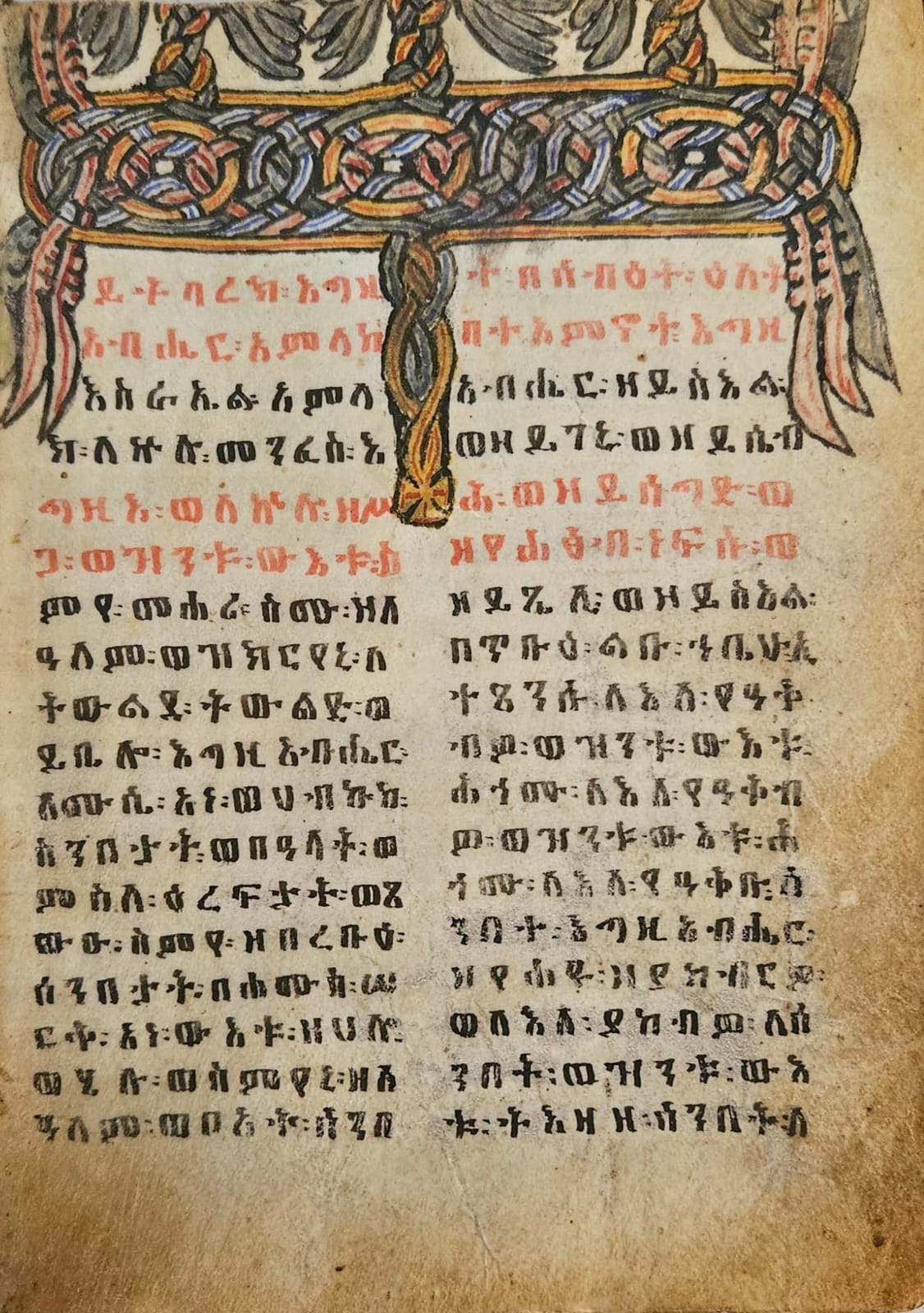 Photo of the manuscript courtesy of Kes Ephraim Lawi
Photo of the manuscript courtesy of Kes Ephraim LawiFor instance, about two years ago, while sifting through Moroccan archives, he was astonished to find a Haggadah from 1943 penned by a Moroccan Jew, written in Judeo-Arabic, and called 'Hitler's Haggadah.' "He used this Haggadah to depict the hardships faced by his Jewish brethren in Europe and offered a harrowing glimpse into what was happening to Jews in Tunisia and Morocco," he explains. "The text was not only fascinating, but it also opened a window into the Jewish literary landscape of North Africa, as it was accompanied by numerous citations and references to holy books, some of which are unknown and have not survived over the years. Each time I come across such compositions, I am deeply moved, as I realize their immense importance and significance."
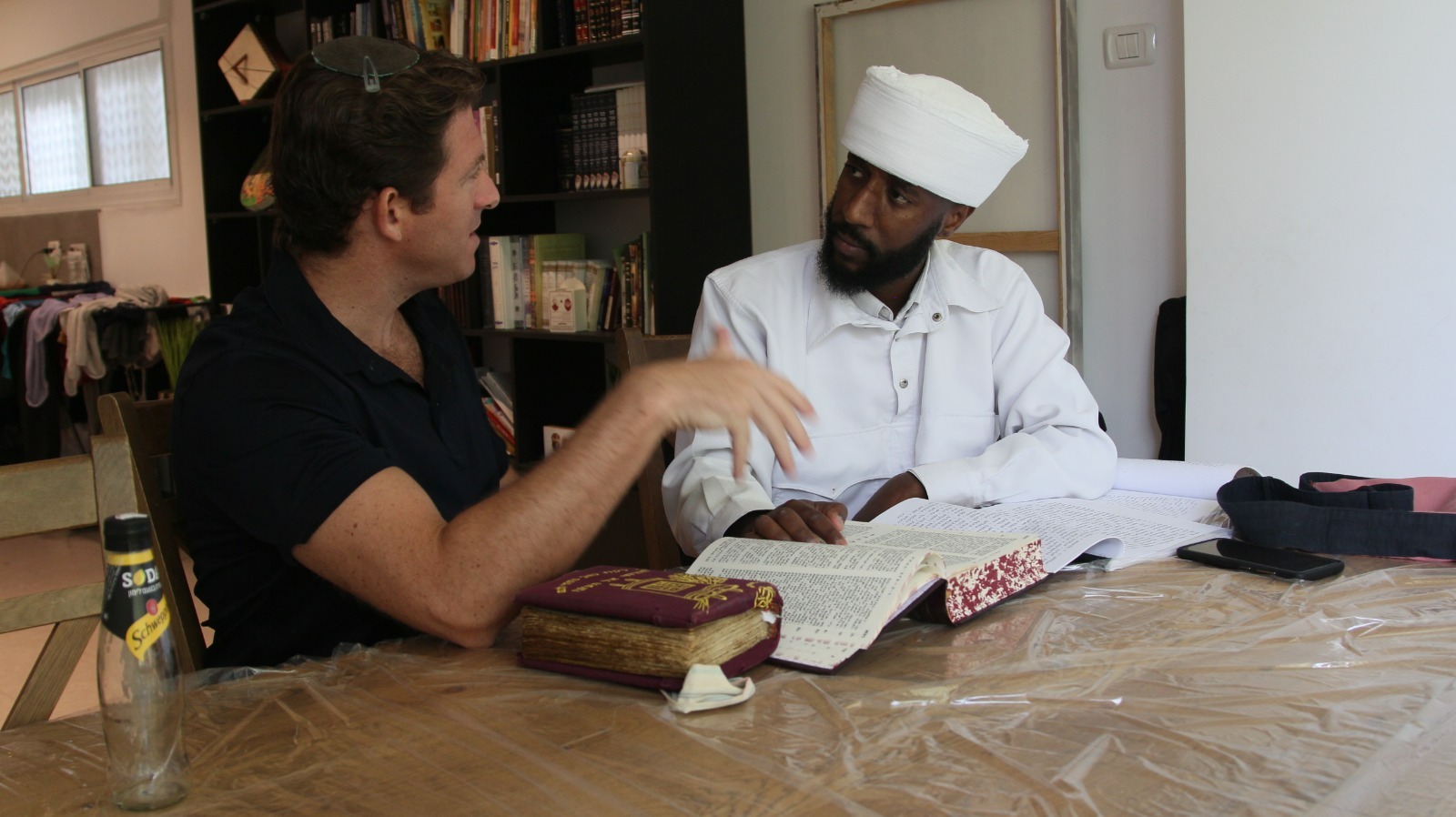 Dr. Yoni Schnitzer and Kes Ephraim Lawi (Photo: Amir Zuckerman)
Dr. Yoni Schnitzer and Kes Ephraim Lawi (Photo: Amir Zuckerman)Recently, Schnitzer uncovered another text - a very ancient manuscript written in Ge'ez, likely composed in the 14th century in Ethiopia. "This text is called 'Tazaza Sanbat – The Ethiopian Jewish Shabbat Midrash', and it spans several pages," he details. "It tells of the unique virtues of the Shabbat, its connection with Israel, and its esteemed place in Hashem's eyes. The text includes several midrashim on Shabbat and discusses the Shabbat customs and practices observed in Ethiopia. When I first read it, I was truly astonished, as I encounter many manuscripts in my research, and I don't recall ever coming across such a unique text on the topic of Shabbat as I read in the Shabbat Midrash. The text truly brings Shabbat to life and illuminates it in a very special way.
"But it's not just the unique significance of the text itself," he remarks, "because although Rabbi Ovadia Yosef z"l ruled that the Beta Israel community of Ethiopia is fully Jewish and there is no need to stringently convert them, over the years, there have been discussions questioning the Jewishness of the Ethiopian community, which deeply hurt them. The Beta Israel community has many traditions suggesting that the Ethiopian community was in ancient Egypt during the Second Temple period, hence the absence of a Babylonian or Jerusalem Talmud. Nevertheless, they proudly preserved the Jewish heritage."
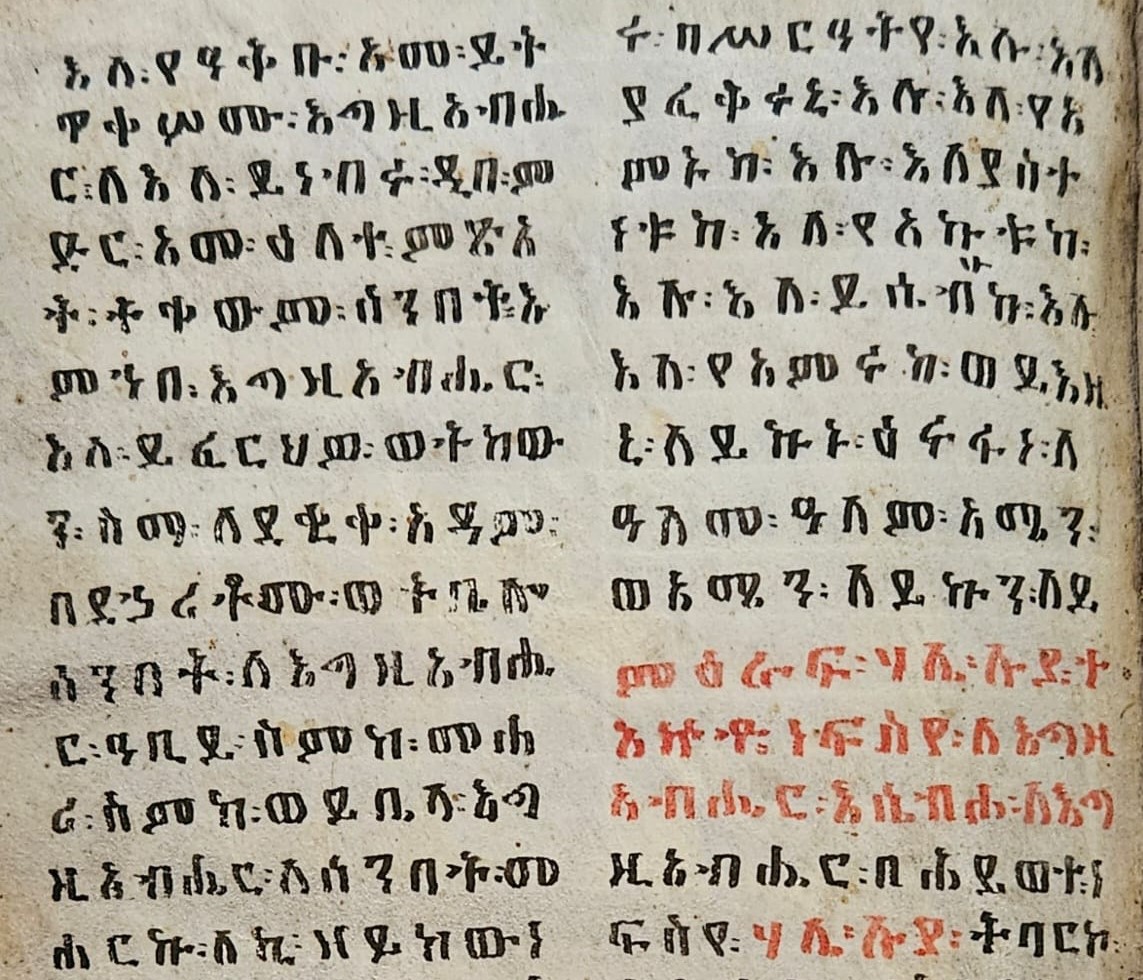 Photo of the manuscript courtesy of Kes Ephraim Lawi
Photo of the manuscript courtesy of Kes Ephraim Lawi"This connection on Shabbat also includes several unique stories specific to Ethiopian Jewry, and the pinnacle is reached towards the end of the text when the strict Shabbat laws observed by the Beta Israel community are mentioned. It shows how the community meticulously kept the Shabbat down to its smallest laws with great care. These are amazing facts that shed light and add knowledge and understanding of the Ethiopian community's life."
Making History
Is this connection known within the Ethiopian community?
"In the days when they lived in Ethiopia, the community was simple and humble; many of them couldn’t read or write," Schnitzer explains. "Those who transmitted Jewish content over the years were the 'kesim,' their spiritual leaders, with each kes responsible for a different area. They would read to the simple folk the sacred texts written in Ge'ez, translating the language into Amharic for the common people. This learning occurred throughout the year, especially before holidays and different festivals when everyone would gather, and the kes would read from the texts. To the main question, no kes does not know this text, as it is very well known and considered sacred, but the community as a whole may not necessarily be familiar with it, which is another reason I see great mission in translating the text into Hebrew and bringing it to light, as most of today's kesim and leaders are elderly. There are no young kesim with expertise in interpreting from Ge'ez to Amharic. If we don't hurry to translate and publish this book, it will vanish from the world."
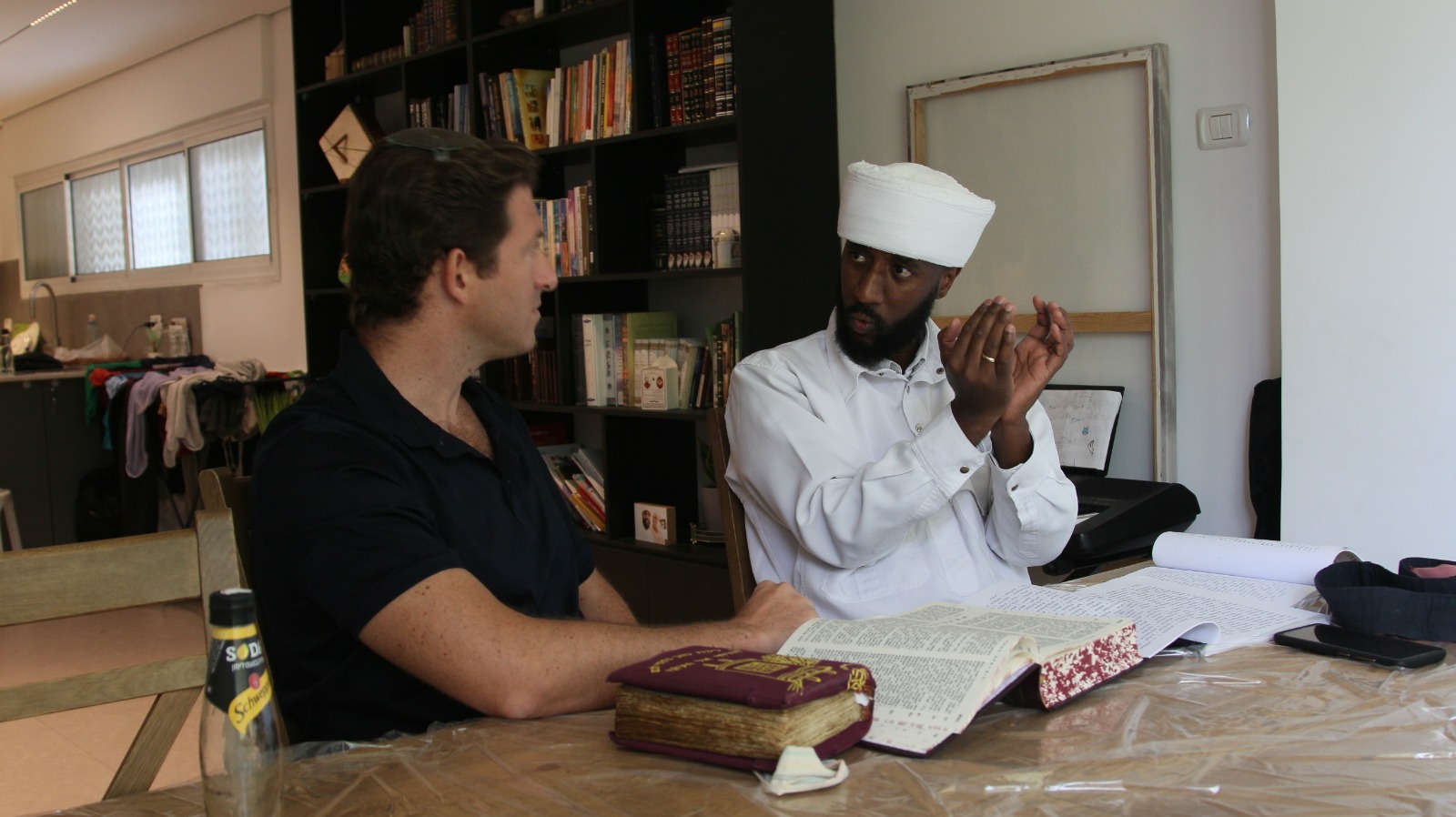 Dr. Yoni Schnitzer and Kes Ephraim Lawi (Photo: Amir Zuckerman)
Dr. Yoni Schnitzer and Kes Ephraim Lawi (Photo: Amir Zuckerman)Schnitzer decided to take action and joined forces voluntarily with Kes Ephraim Lawi, who serves as the spiritual leader of Ethiopian expatriates in the Northern District, continuing the path of his father and grandfather. "We decided to take on the joint project of translating the book into Hebrew," he says, "but in addition to the precise translation we are currently working on, we intend to add a few pages in the book where we will generally discuss the heritage and history of Ethiopian Jews and the Beta Israel community. We will also include photographs of the original so that people can actually see and recognize the ancient Ge'ez letters. In the future, we plan to publish the book in English and distribute it worldwide, to enrich our cultural understanding of the Shabbat experience, and simultaneously open a vital window into the heritage of the Jewish community in Ethiopia."

